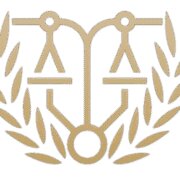Best Construction Accident Lawyers in San Jose
Share your needs with us, get contacted by law firms.
Free. Takes 2 min.
List of the best lawyers in San Jose, United States

1. About Construction Accident Law in San Jose, United States
Construction accident law in San Jose operates at the intersection of state regulations, federal safety standards, and local enforcement. Workers and bystanders can be affected by falls, equipment failures, and hazardous sites on job sites in the Silicon Valley area. Understanding who may be liable and which legal remedies exist helps you protect your rights after an injury.
In California, most on the job injuries fall under workers’ compensation, which is a statutory system providing medical care and benefits regardless of fault. However, there are important exceptions where a third party can be sued for negligence, such as contractors, site owners, or equipment manufacturers. Knowing when to pursue a workers’ comp claim versus a personal injury or premises liability action is crucial for San Jose residents and businesses.
Regulatory oversight matters too. Cal/OSHA enforces construction safety standards in California, and federal OSHA may also regulate national projects or inter-state work. Violations can lead to penalties and influence civil claims by affected workers or their families. For precise requirements, check official government resources and updated codes.
“Construction remains among the most hazardous industries in the United States, with falls being a leading cause of fatalities.” OSHA
For reliable guidance, refer to official sources such as the California Department of Industrial Relations and federal OSHA. These agencies provide the current safety standards, reporting requirements, and enforcement actions that influence construction accident cases in San Jose.
Sources: - California Department of Industrial Relations - Cal/OSHA: https://www.dir.ca.gov/dosh/ - U.S. Department of Labor - OSHA Construction standards: https://www.osha.gov/construction - California Legislature - California Labor Code and Civil Code: https://leginfo.legislature.ca.gov/
2. Why You May Need a Lawyer
-
Scenario 1: A San Jose worker suffers a fall from an improperly assembled scaffold on a high-rise condo site. The worker files a workers’ compensation claim, but a lawyer helps identify possible third-party claims against the scaffold manufacturer or the general contractor. Evidence collection and expert testimony may be needed to prove negligence beyond workers’ comp benefits.
-
Scenario 2: A tenant or visitor is injured by unsecured debris on a construction site near downtown San Jose. A premises liability claim could be appropriate against the site owner or property manager. A lawyer can assess whether safety protocols were ignored and whether multiple parties share responsibility.
-
Scenario 3: A worker is misclassified as an independent contractor on a San Jose project and loses workers’ compensation coverage. An attorney can evaluate employment status and pursue back benefits or a third-party claim if another party is liable.
-
Scenario 4: An injury occurs due to a defective tool or equipment supplied by a rental company near a Santa Clara Valley site. Product liability principles may apply, and a lawyer can coordinate multiple defendants and insurance coverage to maximize recovery.
-
Scenario 5: A fatal accident on a commercial construction site leaves dependents seeking compensation. A construction accident attorney can guide a wrongful death claim, preserve evidence, and manage complex insurance and liens.
-
Scenario 6: OSHA or Cal/OSHA citations are issued after an incident. Legal counsel can connect regulatory findings to civil liability and help mitigate post-accident risk for the company while protecting a worker’s rights.
In San Jose, a skilled attorney helps coordinate between workers’ compensation, civil actions, and regulatory matters. They can also negotiate with insurers, manage deadlines, and compile expert reports for a stronger claim.
“If you are dealing with a construction injury, you may be navigating multiple legal theories at once.” California Lawyers and Safety Professionals resources
Consulting a construction accident solicitor or attorney can clarify which path best fits your situation. A local specialist will understand San Jose and Santa Clara County court practices and insurance practices that affect outcomes.
3. Local Laws Overview
Cal/OSHA Construction Safety Orders (Title 8 CCR)
Cal/OSHA enforces safety standards for construction sites in California, including fall protection, scaffolding, and trenching requirements. These regulations influence both employer liability and claims for injuries on San Jose job sites. The Construction Safety Orders are updated periodically; verify the current text on the official Cal/OSHA site.
In practice, a violation can support a negligence argument in a civil case or affect the amount of compensation available. Employers must maintain safe conditions and provide training, protective equipment, and proper supervision. For current standards, consult Cal/OSHA and the California Code of Regulations.
“Cal/OSHA safety standards set the baseline for on-site protections and enforcement actions.” Cal/OSHA - Construction safety
Official sources: - Cal/OSHA overview: https://www.dir.ca.gov/dosh/ - California Code of Regulations Title 8 (Construction Safety Orders): access via Cal/OSHA portal.
California Workers' Compensation Law (California Labor Code, Division 1, Part 3)
Workers’ compensation provides medical care and benefits for job-related injuries, with the exclusive remedy generally preventing a separate personal injury action against the employer. Third parties can still be liable, so a construction accident may involve both workers’ comp and a separate civil claim. Timelines and forms are governed by the California Labor Code and DWC rules.
San Jose workers and employers should file claims promptly and maintain records of medical treatment, earnings, and impairment. An attorney can help coordinate benefits, liens, and settlement options with insurance carriers. Official guidance is available from the California Division of Workers’ Compensation.
“Workers’ compensation is the exclusive remedy for most job-related injuries in California, but third-party negligence remains a possibility.” California DWC
Official sources: - California Division of Workers’ Compensation: https://www.dwc.ca.gov - California Legislative Information - Labor Code: https://leginfo.legislature.ca.gov/
California Civil Code Section 1714 - Duty of Care
Section 1714 establishes the general duty of care for reasonable safety and non-negligence. It forms the basis for premises liability, negligent construction practices, and recoveries in civil cases. In San Jose projects, this code interacts with site management, subcontractors, and owners when injuries occur.
When a construction site is unsafe due to negligent acts or failures to enforce safety protocols, a civil action under 1714 may be pursued alongside workers’ compensation or third-party claims. For exact text, consult the official Civil Code provisions.
“A person must use ordinary care to avoid injuring others in the course of activities and duties.” California Civil Code
Official sources: - California Legislative Information - Civil Code: https://leginfo.legislature.ca.gov/
4. Frequently Asked Questions
What is a construction accident claim in California?
A construction accident claim encompasses workers’ compensation benefits or third-party personal injury actions arising from job site injuries. It may involve multiple defendants and insurers. A lawyer helps identify all liable parties and coordinate claims.
How do I file a workers' compensation claim after a construction injury in San Jose?
Notify your employer within the required timeframe and file with the employer's workers’ comp insurer. A solicitor can help gather medical records, complete forms, and coordinate treatment. Timelines vary by case.
How long does a construction accident case take in California?
Civil cases typically settle or go to trial over 1-2 years, depending on complexity and court backlog. Workers’ compensation decisions are usually faster but can still involve appeals or permanent impairment ratings.
Do I need a construction accident attorney if the injury is minor?
Yes. Even minor injuries can uncover additional liability or entitle you to benefits beyond medical costs. An attorney ensures proper documentation, deadlines, and insurance interactions.
What is the time limit to file a third-party personal injury claim in California?
Most personal injury claims must be filed within two years from the injury date. Some exceptions apply for discovery or product liability theories. Consult a lawyer for your exact deadline.
Can I sue my employer for a construction injury in California?
Generally not, due to the workers’ compensation system being the exclusive remedy. Third parties, such as subcontractors or equipment suppliers, may still be liable in separate civil actions.
How much does a construction accident attorney cost in San Jose?
Most construction accident lawyers work on a contingency fee basis, typically a percentage of the recovery. If there is no recovery, you often pay no attorney fees.
What damages can I recover in a California construction accident case?
Damages may include medical expenses, wage loss, temporary or permanent impairment, and, in some cases, pain and suffering. Workers’ comp benefits have fixed limits, while civil claims seek broader remedies.
Is Cal/OSHA involved in personal injury cases?
Cal/OSHA focuses on workplace safety and enforcement, not private compensation claims. However, regulatory findings can support civil or workers’ compensation claims.
Do I qualify for workers' compensation if I am misclassified as an independent contractor?
Misclassification can complicate eligibility. A lawyer can assess employment status and pursue workers’ compensation or third-party claims if warranted.
What is the difference between workers' compensation and a third-party lawsuit in California?
Workers’ compensation provides no-fault medical care and benefits with limited remedies. A third-party lawsuit allows compensation for pain, suffering, and non-economic damages beyond medical costs.
How do I prove negligence on a construction site in San Jose?
Proving negligence requires showing a duty of care, breach, causation, and damages. Evidence includes inspection reports, photos, safety logs, and expert opinions.
5. Additional Resources
-
California Department of Industrial Relations - Cal/OSHA - Enforces safety standards for California workplaces, including construction sites. https://www.dir.ca.gov/dosh/
-
U.S. Department of Labor - OSHA - Federal safety standards and enforcement for construction sites that fall under federal jurisdiction or involve multi-state projects. https://www.osha.gov
-
California Division of Workers’ Compensation - Information about workers’ compensation benefits, procedures, and liens. https://www.dwc.ca.gov
6. Next Steps
Step 1 - Gather initial documents within 1-2 weeks: incident report, medical records, photos, and any witness statements. This creates a solid factual base for your claim.
Step 2 - Identify all potential defendants within 2-4 weeks: employer, general contractor, subcontractors, equipment suppliers, and the site owner. This helps determine if multiple claims are appropriate.
Step 3 - Schedule consultations with at least 2-3 construction accident lawyers within 3-6 weeks. Bring your documents and prepare questions about fees and strategy.
Step 4 - Request a written case evaluation and fee agreement within 1-2 weeks after consultations. Ensure you understand contingency options and projected timelines.
Step 5 - Decide on representation and sign a retainer within 1-3 weeks after the evaluation. A formal agreement protects both sides and clarifies responsibilities.
Step 6 - File claims or complaints within statute-appropriate deadlines (seek precise deadlines from your attorney). The process includes medical updates and dispute resolution steps.
Step 7 - Maintain ongoing communication and review settlement offers with your attorney. Expect periodic reviews as the case progresses and evidence evolves.
Lawzana helps you find the best lawyers and law firms in San Jose through a curated and pre-screened list of qualified legal professionals. Our platform offers rankings and detailed profiles of attorneys and law firms, allowing you to compare based on practice areas, including Construction Accident, experience, and client feedback.
Each profile includes a description of the firm's areas of practice, client reviews, team members and partners, year of establishment, spoken languages, office locations, contact information, social media presence, and any published articles or resources. Most firms on our platform speak English and are experienced in both local and international legal matters.
Get a quote from top-rated law firms in San Jose, United States — quickly, securely, and without unnecessary hassle.
Disclaimer:
The information provided on this page is for general informational purposes only and does not constitute legal advice. While we strive to ensure the accuracy and relevance of the content, legal information may change over time, and interpretations of the law can vary. You should always consult with a qualified legal professional for advice specific to your situation.
We disclaim all liability for actions taken or not taken based on the content of this page. If you believe any information is incorrect or outdated, please contact us, and we will review and update it where appropriate.








